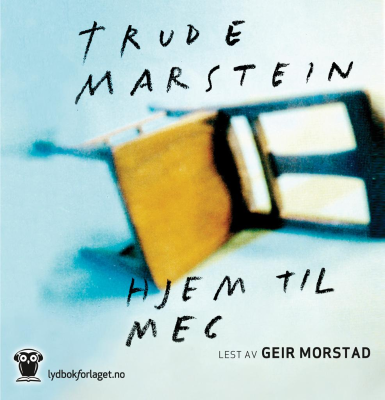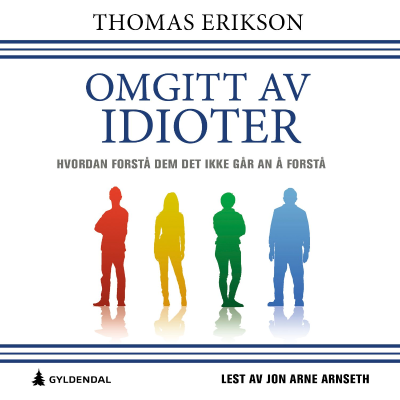
The Autoimmune Wellness Podcast
Podkast av Mickey Trescott + Angie Alt of Autoimmune Paleo
Nutrition | Lifestyle | Inspiration
Prøv gratis i 7 dager
99,00 kr / Måned etter prøveperioden.Avslutt når som helst.
Alle episoder
81 Episoder[https://autoimmunewellness.com/wp-content/uploads/2024/12/6th-Annual.png][https://autoimmunewellness.com/wp-content/uploads/2024/12/6th-Annual.png]https://autoimmunewellness.com/summit The 6th Annual AIP Summit kicks off on January 13, 2025 – make sure to register for this event right now [http://autoimmunewellness.com/summit], and scroll to the bottom of this post to hear a short podcast episode from the founder, Jaime Hartman! The AIP Summit began in 2019 and is presented by AIP Certified Coaches from around the world, representing a broad array of practitioners from across the conventional and holistic medical spectrum. The mission of the AIP Summit is to provide accurate and reliable information to the general population so that more people are able to access the life-changing power of the Autoimmune Protocol on their own. [https://autoimmunewellness.com/wp-content/uploads/2024/12/The-6th-Annual-AIP-Summit-Speakers-Facebook-Post.png]https://autoimmunewellness.com/summit Over five days (January 13-17, 2025), sessions are presented live with the recordings available for free viewing for 24 hours post-broadcast, and then archived for members-only access.This year’s agenda includes AIP cooking demonstrations as well as discussions on self-care, lifestyle factors like sleep and stress, gut health, fitness, and much more. SEE THE FULL AGENDA AND REGISTER FOR INDIVIDUAL SESSIONS HERE! [http://autoimmunewellness.com/summit] If you are not able to attend during the summit week or wish to support the AIP Summit so that we can continue to spread about AIP to autoimmune patients and practitioners throughout the world, consider becoming a supporting member! The post The 6th Annual AIP Summit! [https://autoimmunewellness.com/the-6th-annual-aip-summit/] appeared first on Autoimmune Wellness [https://autoimmunewellness.com].
[https://autoimmunewellness.com/wp-content/uploads/2019/04/hashis-study-results.jpg] [https://autoimmunewellness.com/wp-content/uploads/2019/04/hashis-study-results.jpg]https://autoimmunewellness.com/wp-content/uploads/2019/04/hashis-study-results.jpg Good news! The Autoimmune Protocol (AIP), an elimination and reintroduction protocol aimed at helping those with autoimmune disease identify food sensitivities and increase nutrient-density, continues to be the focus of medical research investigating its efficacy for specific autoimmune conditions. While AIP has been widely used in the autoimmune community since 2011 (see the History of the AIP Movement [https://autoimmunewellness.com/history-aip-movement-2011-to-present/]), medical research into its efficacy began around 2015, with results of the first pilot study published in 2017. Since then, studies have been conducted using AIP as an intervention for inflammatory bowel disease (Crohn’s and ulcerative colitis), Hashimoto’s thyroiditis, rheumatoid arthritis, eczema, and psoriasis. If you’d like to learn more about previous studies, including what interventions were used and the results, check out the AIP Medical Research Review [https://autoimmunewellness.com/autoimmune-protocol-aip-medical-research-review-studies/]. Today I’ll be highlighting the newest AIP medical study, Effects of Autoimmune Protocol (AIP) diet on changes in thyroid parameters in Hashimoto’s disease [https://pubmed.ncbi.nlm.nih.gov/37772528/] by a research team from Poland, Paulina Ihnatowicz, Jerzy Gębski, and Małgorzata Ewa Drywień [1]. This is the second study that has been conducted so far using AIP as an intervention to manage Hashimoto’s thyroiditis and certainly adds to our knowledge base of how to use the protocol for managing it [2]. Hashimoto’s is not only the most common autoimmune disease, but conventional treatment is rarely successful as many patients find that they continue to have symptoms even though their hormone levels have been “treated to target” [3]. INTERVENTION DETAILS For this study, 28 patients with Hashimoto’s thyroiditis were enrolled, with 20 of them completing the study. The average age was 35, with patients between 23-55 years old. Patients underwent initial testing, surveys, and dietary analysis, and then were prescribed individualized, 12-week dietary plans compliant with Core AIP Elimination. It should be noted that in contrast to prior studies using AIP, there was no use of a transition phase–participants made immediate transitions to the elimination diet [2]. In terms of testing completed at baseline and completion of the study, patients had their height and weight measured in a clinic, had lab draws for thyroid hormones (TSH, total and free hormones) and thyroid antibodies, an ultrasound of the thyroid, and they also completed surveys to capture symptom burden. Prior dietary intake was captured using a survey for analysis and comparison of prescribed AIP meal plans. After initial testing, each participant was prescribed an individualized, 12-week Core AIP meal plan based on their anthropometrics (height and weight). They were instructed to continue all prescribed medications and supplements as before, and no adjustments were made to doses. Support was offered via monthly group coaching calls. RESULTS Energy and macronutrient intake A comparison of prior diet and prescribed AIP diet showed that energy intake (calories) was roughly the same before and after the study (2,067 to 1,997 calories). In terms of macronutrient intake, protein increased from 16.77% to 24.9% of total calories, which is an increase of roughly 85 to 125 grams per day (based on a 2,000 calorie intake). The increase in protein came primarily from decreased fat intake. Micronutrient intake Analysis of nutrient intake via prescribed AIP diet showed there was a broad increase in nutrient density during the intervention. Specific nutrient intake increases included Beta-carotene (550%), fiber (162%), folates (198%), long-chain fatty acids (262%), potassium (196%), vitamin A (341%), vitamin C (886%), with other nutrients like B vitamins, iron, zinc, and magnesium with considerable increases. The authors noted that analysis of some nutrients was complicated by supplementation, specifically magnesium, vitamin C, and potassium. Biochemical thyroid changes Blood test analysis showed Thyroid stimulating hormone (TSH) significantly decreased from a mean of 3.72 to 2.69. Free T3 and T4 significantly decreased, although both stayed within reference ranges (3.31 to 2.88; 1.36 to 1.20). Mean anti-TPO antibodies increased (210 to 293) and anti-Tg decreased (317 to 300), although these results did not meet statistical significance. Physical thyroid changes A comparison of thyroid ultrasounds before and after intervention showed the right lobe volume decreased by 5% and the left lobe volume decreased by 6%. Weight and body composition changes Anthropometric measurements taken before and after intervention showed that mean weight decreased from 69 kg to 65.5 kg (152 lbs to 144 lbs). Mean body fat percentage decreased from 33% to 29.5%, indicating that twice as much weight was lost from fat than muscle. Symptom burden Analysis of questionnaires showed a broad improvement of symptoms commonly reported by Hashimoto’s thyroiditis patients. The largest decreases were seen in the following areas: 1. Digestive function 1. Constipation – 36% to 11% (25% difference) 2. Gas – 61% to 21% (35% difference) 3. Flatulence – 61% to 29% (32% difference) 4. Diarrhea – 29% to 7% (22% difference) 5. Abdominal pain – 29% to 14% (15% difference) 2. Energy 1. Tiredness – 82% to 29% (53% difference) 2. Drowsiness – 64% to 21% (43% difference) 3. Fatigue – 50% to 11% (39% difference) 3. Mental 1. Impaired concentration – 71% to 18% (53% difference) 2. Headaches – 39% to 11% (28% difference) 3. Depression – 29% to 4% (25% difference) 4. Pain 1. Muscle cramps – 43% to 7% (36% difference) 2. Joint pain – 57% to 21% (36% difference) 5. Skin 1. Hair loss – 64% to 32% (32% difference) 2. Skin problems – 57% to 7% (50% difference) 3. Dry skin – 71% to 32% (39% difference) In addition to the above results, the authors provided an analysis of specific nutrient intake associations with all of the measures in the study. DISCUSSION AND TAKEAWAYS AIP is an incredibly nutrient-dense diet This is the first study to provide a detailed analysis of the nutrient-density of Core AIP compared to a standard diet. The analysis showed that Core AIP is especially rich in beta-carotene, retinol, fiber, long-chain fatty acids, B vitamins, and minerals (like iron, magnesium, and potassium). It is important to note that the authors prescribed nutrient-dense foods like fermented foods, cold-water fatty fish, broth, and colorful fruits and vegetables in their meal plans, according to AIP guidelines. We know that these nutrients are essential to a healthy body and immune system, and it is possible that many of the anti-inflammatory and restorative benefits of AIP likely come from this increase in nutrient density. Takeaway: Don’t forget to apply nutrient density in your approach to AIP! Do we focus on thyroid hormones or symptoms to track progress with Hashimoto’s? The results of this study were a bit paradoxical in terms of thyroid hormones. It is important to note that patients coming into this study were considered euthyroid, or being within normal thyroid hormone reference ranges. As a functional medicine-trained nutritionist, my view is that this group actually could have been considered subclinical hypothyroid with a mean TSH of 3.72, as functional medicine uses a narrower reference range for TSH (.5 to 3 mU/L, compared to the 0.27 to 4.2 used in the study). By that standard, AIP did an excellent job of bringing TSH down under 3, with a decrease of the mean to 2.62. The part that is paradoxical are the thyroid hormone results. Free T4 and free T3 saw small but significant changes downward. Usually this would indicate that there is less thyroid hormone available to be used in the tissues and according to the conventional model of thyroid treatment, perhaps cause symptoms. But when we take a look at other indicators of thyroid health used in this study, this doesn’t seem to be a bad thing: * Thyroid ultrasound showed a decrease in thyroid volume. This is important because thyroid volume is linked to higher autoimmune activity, inflammation, and symptoms in patients with Hashimoto’s thyroiditis. * Body composition changes indicate positive metabolic changes despite a diet identical in energy density. The mean weight loss was 8 pounds in 12 weeks, with a 4% decrease in body fat percentage. * Surveys indicate a decrease in Hashimoto’s symptoms. When we take all of these results together, they seem to suggest an improvement in some of the core areas of concern for patients with Hashimoto’s (thyroid swelling, weight gain, and high symptom burden). The reduction in TSH, which is a signal from the brain indicating it needs the thyroid to produce more hormones, points to the body finding balance and having enough thyroid hormone for metabolic needs. In their own discussion, the study authors theorized that the paradoxical result could be due to an improved nutritional status increasing sensitivity to thyroid hormone in the tissues. Before we get back to the question on what to focus on when gauging progress with Hashimoto’s, I want to share a couple of features of the disease. First, the only conventional treatment for Hashimoto’s is optimizing hormones with thyroid hormone replacement medication. Second, medical research shows that Hashimoto’s patients often continue to have symptoms even after their hormones are corrected to reference ranges [3]. As a Hashimoto’s patient myself, I find the results of this study incredibly validating that someone with this condition can see a drastic improvement in their symptoms without it being reflected in their hormone levels. While hormone levels are important for tracking and treatment, I’ve always been a proponent of equally valuing symptom burden as a major indicator for progress in managing this disease. Takeaway: Results in decreased thyroid volume, weight loss, and symptom management indicate improved thyroid status, despite paradoxical results in thyroid hormone parameters. How do these results compare to the results of the first AIP Hashimoto’s pilot study? There are two major differences between the interventions used in these studies. First, the original AIP Hashimoto’s study used a 6-week transition phase and a 4-week elimination phase [2]. This study did not use a transition phase and had a much longer elimination phase of 12-weeks. Second, the original AIP Hashimoto’s study implemented small changes in lifestyle areas like sleep, stress-management, movement, and connection. This study focused only on the dietary side of AIP. Both studies saw similar results in terms of symptom burden and improvement of quality of life for patients with Hashimoto’s. In the original AIP Hashimoto’s study, medications were titrated based on thyroid hormone levels and they did not see any changes in hormone or antibody levels, although they did see a trend for reduced medication need by the end of the study [2]. Measures tested between the two studies differed a little. The original AIP Hashimoto’s study did not test anthropometric changes, thyroid volume, or the nutrient comparison of the diets, but they did measure a marker of inflammation, hs-CRP (which decreased by 29%) [2]. This was not included in the Polish study. Takeaway: This new AIP Hashimoto’s study adds to our knowledge about AIP’s efficacy in terms of nutrient density, possibility to decrease thyroid volume, and weight loss. What about the changes in thyroid antibodies? Hashimoto’s is an autoimmune disease for which two antibodies are known. This study found an increase in anti-TPO and a decrease in anti-Tg, although these results did not meet statistical significance (meaning the result could not be differentiated from chance 1 out of 20 times). I want to share my personal view on antibodies based on review of research on this topic and my clinical experience working with Hashimoto’s patients. First, there is research associating antibodies with a higher symptom burden and lower quality of life for Hashimoto’s patients; there is also research showing that antibody levels are not correlated with symptoms. My observation as a clinician is that antibodies are helpful for diagnosis and in the early stages of healing, but do not always line up with symptom burden reported by the patient. I’m an advocate for having them tested and tracked, but not using them to gauge progress outside of other indicators of thyroid optimization (like symptoms or hormone levels). Takeaway: Antibodies should not be a primary marker of disease burden for patients with Hashimoto’s. CONCLUSION This is the second quality study showing AIP is effective as a dietary intervention for managing symptoms that come with Hashimoto’s thyroiditis. I’m really impressed with the work of the Polish team that put this together, especially their attention to nutrient-density and customized meal plans. The addition of thyroid ultrasounds as well as the longer duration of the study are very helpful in understanding more about the physical changes possible as well as the timeline over which patients can expect to see results. If you or a loved one has Hashimoto’s, I hope you learned some great takeaways from this review! References 1. Ihnatowicz P, Gębski J, Drywień ME. Effects of Autoimmune Protocol (AIP) diet on changes in thyroid parameters in Hashimoto’s disease. Ann Agric Environ Med. 2023;30(3):513-521. doi:10.26444/aaem/166263 2. Abbott RD, Sadowski A, Alt AG. Efficacy of the Autoimmune Protocol Diet as Part of a Multi-disciplinary, Supported Lifestyle Intervention for Hashimoto’s Thyroiditis. Cureus. 2019;11(4):e4556. Published 2019 Apr 27. doi:10.7759/cureus.4556 3. Groenewegen KL, Mooij CF, van Trotsenburg ASP. Persisting symptoms in patients with Hashimoto’s disease despite normal thyroid hormone levels: Does thyroid autoimmunity play a role? A systematic review. J Transl Autoimmun. 2021;4:100101. Published 2021 Apr 15. doi:10.1016/j.jtauto.2021.100101 The post AIP Research Update: A Hashimoto’s AIP Study from Poland [https://autoimmunewellness.com/aip-research-update-a-hashimotos-aip-study-from-poland/] appeared first on Autoimmune Wellness [https://autoimmunewellness.com].
[https://autoimmunewellness.com/wp-content/uploads/2024/04/awresources.jpg][https://autoimmunewellness.com/wp-content/uploads/2024/04/awresources.jpg]https://autoimmunewellness.com/wp-content/uploads/2024/04/awresources.jpg In January, a new option for the elimination phase of the Autoimmune Protocol (AIP) was announced: Modified AIP Elimination. If you are looking for the exact details of which foods are included and avoided in both Core and Modified AIP, don’t miss What is AIP: The Definitive Guide [https://autoimmunewellness.com/what-is-aip-the-definitive-guide/] which has been completely updated. A quick summary of the reasons why Modified AIP was added as an elimination option: * Many patients in the AIP medical studies saw results before reaching a full elimination * AIP Certified Coaches reported seeing good results without a full elimination using a modified protocol in their practices * Recent elimination diet research indicates that stricter does not always produce better results * Increasing accessibility, affordability, and sustainability can widen the reach and application of AIP If you’d like to read more about why AIP was updated, the research process behind making the update, be sure to read Announcing Modified AIP: A 2024 Update to the Autoimmune Protocol [https://autoimmunewellness.com/announcing-modified-aip-a-2024-update-to-the-autoimmune-protocol/]. INTRODUCING: AN UPDATED AUTOIMMUNE WELLNESS RESOURCE LIBRARY The founding mission here at Autoimmune Wellness has been to provide free resources for anyone who wants to embark on AIP. Since 2012, we’ve been delivering a resource library with food lists, meal plans, and other materials as a part of our AIP Quick Start Guide [https://autoimmunewellness.com/opt-in/] email series. Since inception, over 200,000 of you have downloaded these materials! With the 2024 update to the Autoimmune Protocol [https://autoimmunewellness.com/announcing-modified-aip-a-2024-update-to-the-autoimmune-protocol/], it was a prime opportunity to take a look at this resource library and give it a comprehensive update. Not only have all of the prior resources been edited and redesigned, but new materials have been added for the new Modified AIP elimination (including dedicated food lists, a meal plan, and reintroduction materials). Here is a list of what is included in the updated Autoimmune Wellness Resource Library: * AIP Quick-Start Guide * Core AIP Foods to Include * Core AIP Foods to Avoid * Modified AIP Foods to Include (NEW!) * Modified AIP Foods to Avoid (NEW!) * Core AIP Meal Plan & Shopping List * Modified AIP Meal Plan & Shopping List (NEW!) * AIP Reintroduction Guide * Core AIP Reintroduction Stages * Modified AIP Reintroduction Stages (NEW!) * Food Reaction Checklist * AIP Medical Research Review (NEW!) All of these materials are presented as beautifully-designed .pdf files that you can read on your computer, e-reader, or other digital device. They can also be printed at home. HOW CAN YOU DOWNLOAD THESE MATERIALS? 1. If you are a subscriber to the Autoimmune Wellness newsletter, you should have an email in your inbox with download links to each resource in the library. 2. If you are not yet a subscriber, you can sign up here [https://autoimmunewellness.com/opt-in/] and receive the AIP Quick Start email series, in which you will be sent the resources in a series of emails over the course of 6 days. 3. If you only want specific resources, you can sign up to receive them individually by opting in using the following links: * AIP Quick-Start Guide, Core and Modified AIP Food Lists [https://autoimmunewellness.myflodesk.com/core-modified-aip-quickstart-food-lists] * Core AIP Meal Plan and Shopping List [https://autoimmunewellness.myflodesk.com/core-aip-meal-plan] * Modified AIP Meal Plan and Shopping List [https://autoimmunewellness.myflodesk.com/modified-aip-meal-plan] * AIP Reintroduction Guide, Core and Modified AIP Reintroduction Stages, and Food Reaction Checklist [https://autoimmunewellness.myflodesk.com/aip-reintroduction-guide-core-modified-stages-reaction-checklist] Are you a practitioner that uses AIP in your practice and would like an extended library of AIP resources to use with your patients or clients? Be sure to consider taking the AIP Certified Coach Practitioner Training Program [https://aipcertified.com/training/], where you can learn best practices for implementing and personalizing AIP for the population you serve. Graduates are granted a license to use a collection of 50+ handouts directly with their clients, including assessments, journals, troubleshooting materials, and more. If you’d like to hear me talk through these materials, listen to the podcast below: Thank you for being a member of the Autoimmune Wellness community, and I sincerely hope these resources help you, your friends, or your loved ones embark on AIP easily and successfully! The post Core & Modified AIP: An Updated AIP Resource Library! [https://autoimmunewellness.com/core-modified-aip-an-updated-aip-resource-library/] appeared first on Autoimmune Wellness [https://autoimmunewellness.com].
[https://autoimmunewellness.com/wp-content/uploads/2024/03/kriscookbook.png][https://autoimmunewellness.com/wp-content/uploads/2024/03/kriscookbook.png]https://autoimmunewellness.com/wp-content/uploads/2024/03/kriscookbook.png I wanted to introduce you to the newest AIP cookbook on the scene, Meals You Deserve [https://www.kriskingmedia.com/shop/p/meals-you-deserve-unlock-health-wealth-with-aip-paleo-recipes-for-all] by Kris King! Many of you likely recognize Kris as one of the recipe contributors for Autoimmune Wellness (you can view her impressive AIP library of recipes on the site here [https://autoimmunewellness.com/author/kris-king/]!). Since the blog has become an archive, Kris has put her talent to good use in creating an ebook of recipes for the AIP community to continue to enjoy. What are my favorite things about Meals You Deserve [https://www.kriskingmedia.com/shop/p/meals-you-deserve-unlock-health-wealth-with-aip-paleo-recipes-for-all]? * Recipes that are full of flavor and fun to make! * The recipes are all compliant with AIP Core Elimination (yes, including that chicken and dumplings on the cover!) * It contains extras such as meal planner sheets and budget planner sheets, for keeping you organized and within your financial limits. * Quick tips to make cooking for AIP seamless in your own kitchen! I sat down with Kris to record a podcast to talk about her story of healing using AIP, the process of writing an ebook, her favorite AIP cooking hacks, and more! You can tune in by using the podcast player at the bottom of this post. Meals You Deserve [https://www.kriskingmedia.com/shop/p/meals-you-deserve-unlock-health-wealth-with-aip-paleo-recipes-for-all] is perfect for anyone looking to embark on Core AIP and looking for simple recipes with fun flavors that also won’t break the bank. I can’t recommend it enough! The post Introducing Meals You Deserve by Kris King [https://autoimmunewellness.com/introducing-meals-you-deserve-by-kris-king/] appeared first on Autoimmune Wellness [https://autoimmunewellness.com].
[https://autoimmunewellness.com/wp-content/uploads/2023/12/modifiedaip.jpg][https://autoimmunewellness.com/wp-content/uploads/2023/12/modifiedaip.jpg]https://autoimmunewellness.com/wp-content/uploads/2023/12/modifiedaip.jpg Since inception in 2011, the Autoimmune Protocol (AIP) has not undergone any major updates or changes and has existed as originally conceived by experts and used by the autoimmune community. Today, that is changing with the announcement of a new option: Modified AIP Elimination. This post serves to provide the rationale behind this change as well as provide links for learning more about the new protocol. REASONS TO UPDATE AIP First, let’s discuss some AIP history and what led to these changes. Originally, Sarah Ballantyne, PhD. wrote extensively about and refined the protocol on her blog and in her books, which formed the foundations of the AIP protocol and movement. These foundations led to collaboration between leaders in the AIP community in the creation of the AIP Certified Coach Practitioner Training [http://aipcertified.com], serving to educate healthcare providers in best practices for using AIP with their clients and patients. Additionally, Sarah’s research and writing sparked interest from the medical community to formally study the efficacy of AIP for various autoimmune conditions [https://autoimmunewellness.com/aip-medical-research/], including Crohn’s disease, ulcerative colitis, Hashimoto’s thyroiditis, rheumatoid arthritis, and psoriasis. While medical research into the efficacy of AIP is still in its infancy, early results have shown promise at helping those with autoimmune disease achieve a higher quality of life, less symptom burden, and need less medication (you can read a review of all the results here [https://autoimmunewellness.com/autoimmune-protocol-aip-medical-research-review-studies/]). Now that there is an emerging body of research into the efficacy of AIP, as well as a large group of practitioners with many collective years of expertise in AIP implementation and customization, it is time for analysis to see what is working and what could be made better for the next wave of individuals looking to embark on the protocol. Here are the major reasons why the Autoimmune Protocol is being updated now: #1 MANY PATIENTS IN THE AIP MEDICAL STUDIES SAW RESULTS BEFORE REACHING A FULL ELIMINATION In each of the AIP medical studies, a 6-week, gradual transition was used to ease patients into the elimination phase, which was then maintained for 4 more weeks. In the AIP IBD Study [https://www.ncbi.nlm.nih.gov/pmc/articles/PMC5647120/], 73% of patients achieved clinical remission at week 5, which was 1 week before the full elimination was complete. In this study, all of these patients then maintained clinical remission throughout the duration of the study and no additional patients reached clinical remission after this point. What this tells us is that it is likely the earliest eliminations, specifically, that were most responsible for the favorable results and that the full elimination phase may not have been necessary for all of them. #2 AIP CERTIFIED COACHES ARE REPORTING GOOD RESULTS WITHOUT A FULL ELIMINATION The Autoimmune Protocol has now been in widespread use in the practitioner community for many years through AIP Certified Coach [http://directory.aipcertified.com]. Nearly 1,000 healthcare providers from all types of backgrounds and specialties have been trained and certified to implement AIP in their work. In surveying the graduate community, AIP Certified Coaches have told us that they often find the original protocol is more restrictive than necessary and they are often modifying the list of eliminations to suit their clients’ and patients’ needs. They also report that they continue to see good results using a modified or less restricted elimination protocol. #3 OTHER ELIMINATION DIET RESEARCH INDICATES THAT STRICTER IS NOT ALWAYS BETTER When AIP was conceived there was very little research into the efficacy of elimination diets to help manage autoimmune disease, especially conducted directly with humans. In the last decade, this has changed and many studies have been published using different elimination protocols for specific autoimmune conditions, especially gluten-free and dairy-free diets. The promising results from studies using fewer eliminations shows that for some patients and conditions, progress can be made with a simpler approach. #4 INCREASING ACCESSIBILITY, AFFORDABILITY, AND SUSTAINABILITY CAN WIDEN THE REACH OF AIP Food access and budget [https://autoimmunewellness.com/accessible-aip-when-a-healing-diet-isnt-in-your-budget/] have always been major barriers to individuals implementing the Autoimmune Protocol, both on their own or in working with a coach. Some patients are simply not able to source or afford the ingredients needed to implement a full elimination, and others don’t have the time to prepare the entirety of their meals from scratch. In this case, we’ve long recommended modifying the protocol to accommodate those facing these barriers, but providing an official version of the protocol that is more budget-friendly and accessible will allow even more people to find healing through AIP. THE PROCESS OF UPDATING AIP Updating AIP in 2024 has come out of consultation with many key players in the AIP community over the course of a few months. We interviewed researchers who performed the AIP medical studies and research in other similar areas, as well as experts and writers in the area of autoimmune health. We also surveyed and interviewed key members of the AIP Certified Coach community who predominantly work with autoimmune patients or clients. Lastly, we considered recent scientific evidence for elimination diets, food allergies/sensitivities, and reintroduction protocols in the new approach. What we learned from this exploration was two-fold: first, that the original protocol still had high value and efficacy in both research and practice. And second, that many researchers and AIP Certified Coaches were confident that some patients would be best served by a less-restrictive option. This led to the creation of two separate options for the elimination phase which are detailed below. INTRODUCING: CORE AIP AND MODIFIED AIP Going forward, there are now two versions of the Elimination Phase, to be known as AIP Core Elimination and AIP Modified Elimination. The original protocol, as used in the AIP medical studies and original AIP literature is not changing and will now be known as AIP Core Elimination. The intention is to preserve the original protocol for research comparison and to use with patients or clients who either need a stricter approach or can implement it easily (due to support, finances, or time). The new protocol, a less-strict and more accessible version will be known as AIP Modified Elimination. This new protocol incorporates what we’ve learned about foods that are well-tolerated in the autoimmune community, and is simplified for ease of implementation, budget, and accessibility. You can read more about which foods are included and avoided in both Core AIP and Modified AIP Elimination protocols at the updated Definitive Guide to AIP [https://autoimmunewellness.com/what-is-aip-the-definitive-guide/]. WHICH PROTOCOL TO START WITH? This then leads to the question of which protocol a person should choose when they embark on the Autoimmune Protocol. That depends! The goal of AIP has always been to discover the least-restrictive dietary approach that produces the best health for each person. With this in mind, Modified AIP is an ideal starting point for most people as it is more affordable, accessible, takes less time to implement, and still removes the most potentially-problematic foods. Ideally, modified AIP produces the desired result and then a person can move on to the reintroduction phase, sparing them a drawn-out elimination and reintroduction process. There are a few reasons why a person would choose Core AIP to begin with. They may have a condition, like IBD, where research indicates that the elimination phase has a good chance of producing results quickly. Or they may have another condition that is potentially serious and are highly motivated to transition and implement to find relief. Lastly, they may not experience some of the barriers that make Core AIP difficult to implement – like a lack of cooking skill, financial flexibility, or support at home. If you are looking for resources to start Core or Modified AIP, click here or on the image below [https://autoimmunewellness.myflodesk.com/quickstart] to get our AIP Quicklstart Guide sent to your inbox, including food lists, meal plans, and more! [https://autoimmunewellness.com/wp-content/uploads/2024/01/Modified-AIP-Meal-Plan-scaled.jpg]https://autoimmunewellness.myflodesk.com/quickstart FAQ: Is anything changing about the original AIP protocol? No, the original protocol is now simply known as “Core AIP” for differentiation. All of the foods eliminated, included, timeline, and reintroduction procedure remain the same. See the updated Definitive Guide to AIP [https://autoimmunewellness.com/what-is-aip-the-definitive-guide/] for food lists and more information. Who has the right to update AIP? There is no one expert that owns the rights to determine what the AIP protocol entails, and Dr. Sarah Ballantyne, whose work formed the foundation of the AIP movement, has moved on from researching and working with the autoimmune community. This is why this update is coming by consensus from the leaders of the AIP Certified Coach [http://aipcertified.com] community as well as researchers who have studied the protocol in medical studies. What happens to all of the recipes and resources labeled AIP? All of the recipes, meal plans, and other resources created for Core AIP also apply to Modified AIP, since Core AIP simply has more eliminations than Modified AIP. As more resources for Modified AIP are created, a distinction will emerge and each person navigating either protocol should be careful to check recipes for compliant ingredients. Be sure to bookmark the updated Definitive Guide to AIP for reference as it will always contain the most current protocol information and food lists. How does this change the reintroduction protocol? The reintroduction protocol following Core AIP is the same as it was originally, and the reintroduction protocol following Modified AIP simply starts further along in the process since many foods in various reintroduction stages are already included during the elimination phase. You can learn more at the updated Reintroduction Guide [https://autoimmunewellness.com/how-to-reintroduce-food-on-aip-the-definitive-guide/]. This is a big update, and one that is bound to increase the amount of people who are positively affected by embarking on the Autoimmune Protocol. If you have any questions that aren’t addressed here, feel free to post them in the comments! [https://autoimmunewellness.com/wp-content/uploads/2024/06/AIP-Resource-Library-Collection-scaled.jpg]https://autoimmunewellness.myflodesk.com/quickstart DOWNLOADABLE RESOURCES If you are looking to get started with AIP, you will want to sign up to get the AIP Quick Start Guide. Just pop your email in the box below and we will send you the following resources over the course of a week: * Complete, printable lists of the foods to avoid and include during AIP * A 2-week AIP meal plan and shopping list * A 90-minute batch cooking video from Mickey * Printable guides on food reintroductions and reactions You will then be subscribed to our occasional newsletter, where we deliver free, exclusive content in the form of tips, articles, recipes, news, and more. By signing up, you will be the first to know about what is happening in the autoimmune community! CONNECT WITH UShttps://www.facebook.com/autoimmunepaleohttps://instagram.com/autoimmunepaleohttps://www.pinterest.com/autoimmunepaleo/https://www.youtube.com/channel/UCYA6ubSj3PwMoxWytNL09tw The post Announcing Modified AIP: A 2024 Update to the Autoimmune Protocol [https://autoimmunewellness.com/announcing-modified-aip-a-2024-update-to-the-autoimmune-protocol/] appeared first on Autoimmune Wellness [https://autoimmunewellness.com].
Prøv gratis i 7 dager
99,00 kr / Måned etter prøveperioden.Avslutt når som helst.
Eksklusive podkaster
Uten reklame
Gratis podkaster
Lydbøker
20 timer i måneden

































